Physical Address
304 North Cardinal St.
Dorchester Center, MA 02124
Physical Address
304 North Cardinal St.
Dorchester Center, MA 02124
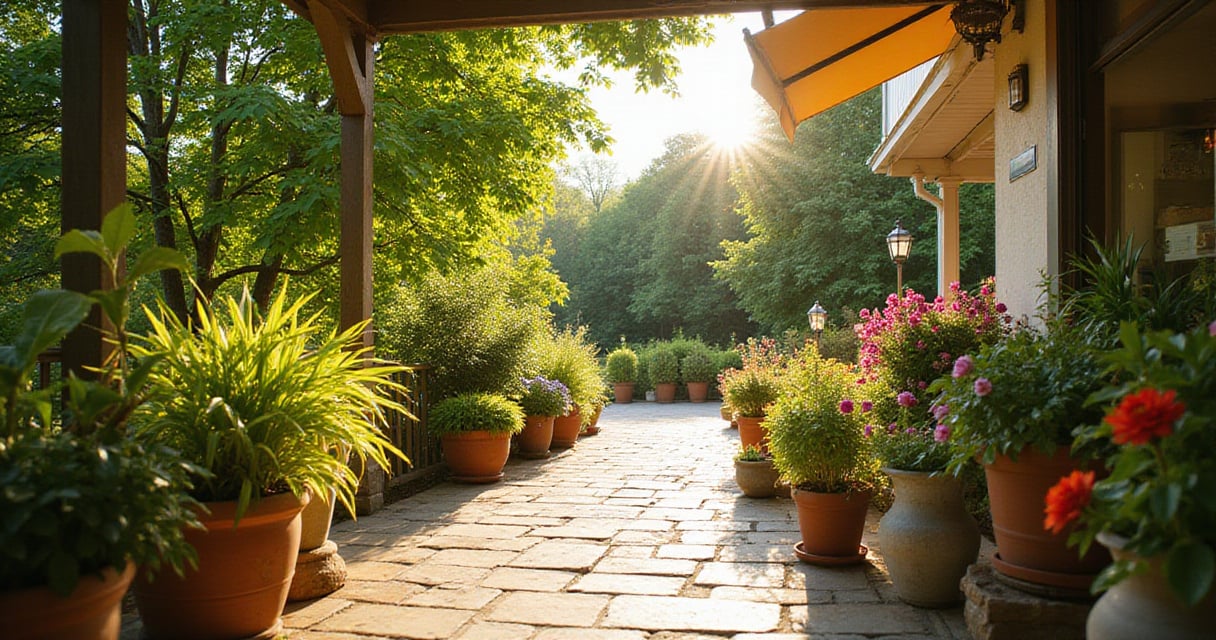
Discover 23 expert secrets to create stunning container gardens that look professionally designed. Learn essential techniques for soil, plant selection, and arrangement from a retail display expert.
Dreaming of lush greenery and vibrant blooms, but limited to a balcony, patio, or small urban space? Container gardening is your secret weapon to unlocking a world of horticultural possibilities. Imagine stepping outside to snip fresh herbs for dinner or admiring a riot of colorful flowers just steps from your door. This isn’t just a trend—it’s a revolutionary way to bring nature closer, one pot at a time.
As someone who’s spent years in luxury retail design, I’ve discovered that the same principles that make store displays captivating can transform your container gardens into showstopping focal points. Ready to create container gardens that look professionally designed? Let’s dive into 23 secrets that will elevate your potted paradise!
Container gardening offers the ideal entry point for gardening beginners. Unlike traditional in-ground gardening, you’re the master of your container’s universe—controlling soil, water, and sunshine exposure by simply moving your pots around. Mistakes are part of learning, and in containers, they’re smaller and easier to fix.
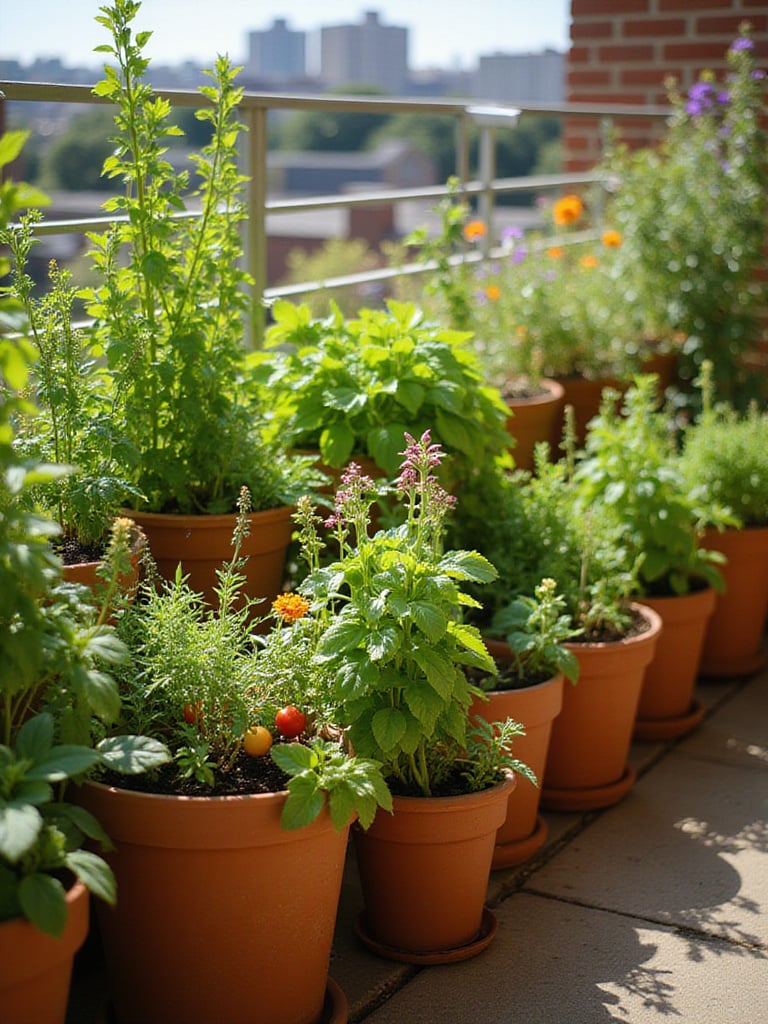
The benefits are numerous: complete environmental control, accessibility anywhere with sunlight, flexibility to move plants, fewer pest issues, and lower maintenance compared to in-ground gardening. You might think container gardening limits your choices, but a vast array of plants flourish in pots—herbs, vegetables like tomatoes and peppers, colorful flowers, and even dwarf fruit trees can all thrive in containers.
The heart of the matter is that container gardening builds confidence. Seeing your plants thrive in their pots is incredibly rewarding and encourages you to explore deeper into the gardening world.
The humble pot is more than just a vessel—it’s your plant’s home, and choosing wisely impacts growth and health. Container size dictates root development space; too small will cramp roots and stunt growth, while too large can lead to overwatering and poor drainage.
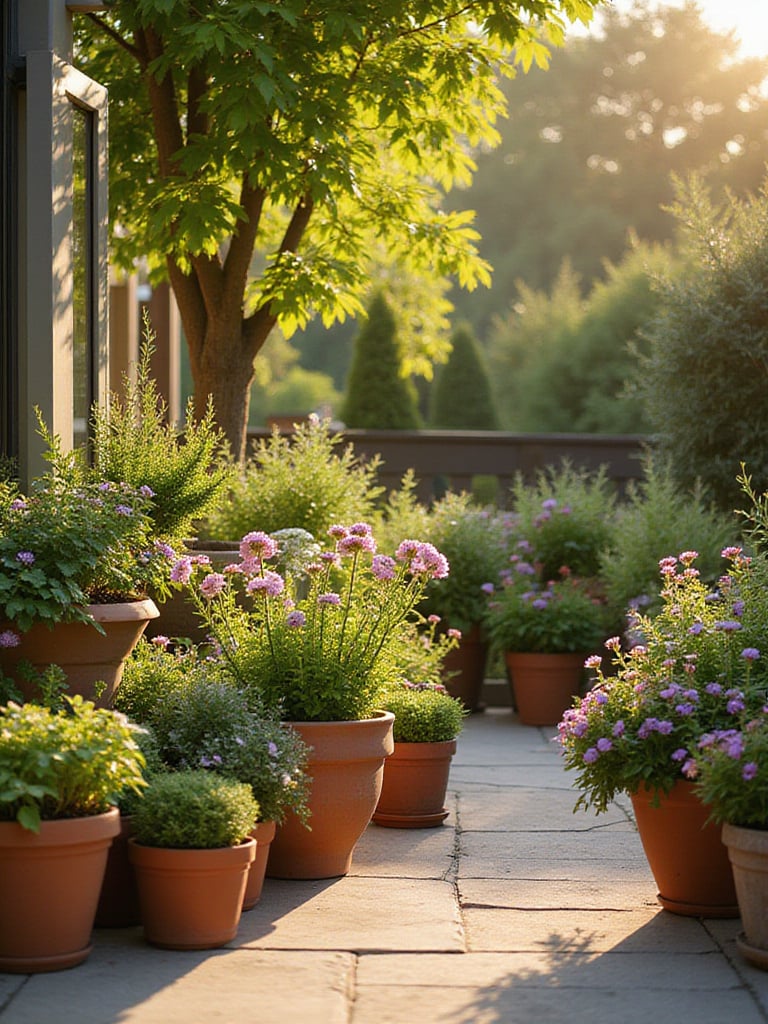
Material matters just as much as size. Let’s break it down:
Picture it this way: your container is both your plant’s home and a design element. Choose containers that complement your space while providing the right environment for your plants.
Waterlogged soil is a silent killer in container gardening. When soil is constantly saturated, oxygen is displaced, essentially suffocating the roots. This leads to root rot, nutrient deficiencies, and ultimately, plant death.

The simple trick to avoid waterlogged soil? Add a layer of drainage material at the bottom of your container before adding potting mix. This creates a reservoir for excess water to drain away from the roots. While pea gravel, broken pottery shards, or lightweight expanded clay aggregate (LECA) are all effective, the critical step is using a breathable barrier like landscape fabric between this drainage layer and your potting mix. This prevents soil from washing down and clogging the drainage path.
Here’s where it gets interesting: contrary to popular belief, using materials like packing peanuts or large rocks can actually reduce drainage by taking up space that should be filled with porous material, effectively raising the perched water table. When you water, it should flow freely from the drainage holes—pooling water indicates issues.
Forget digging up soil from your backyard for your container gardens. Garden soil, while great in the ground, is a recipe for disaster in pots—it’s too dense, compacts easily, restricts drainage, and often harbors weed seeds and pathogens.
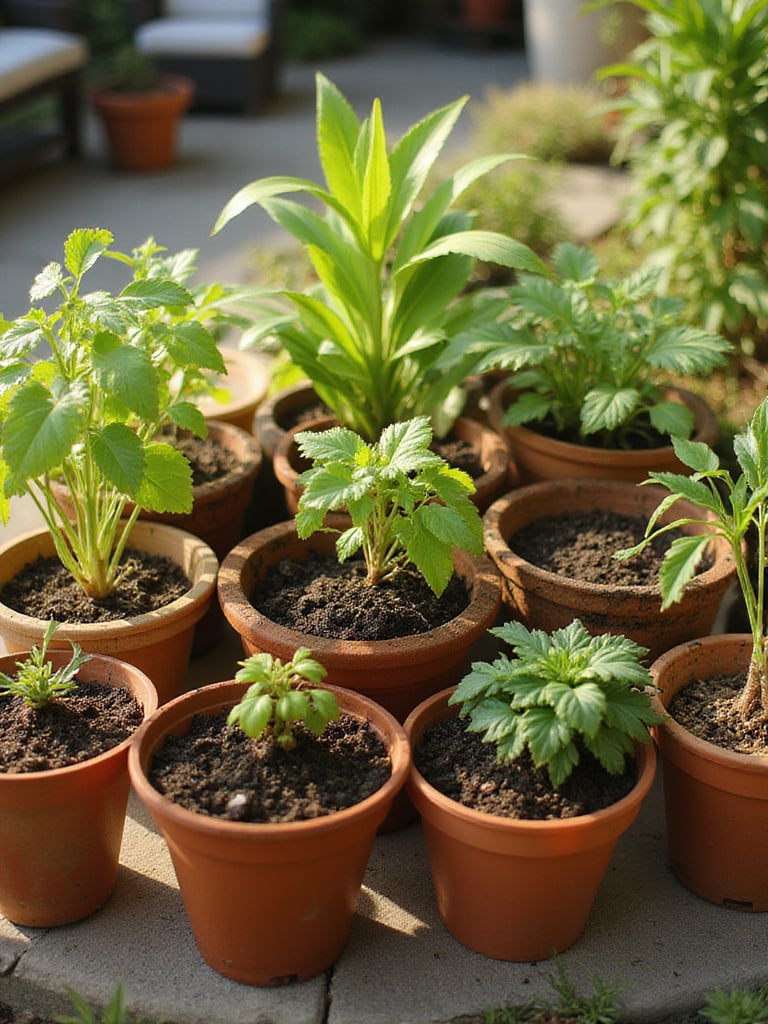
A good container mix is lightweight, well-draining, and provides ample aeration. The magic blend typically includes:
“The foundation of any great container garden is the soil—it’s like the stage that allows your plant performers to shine.”
The missing piece is fertilization. Container plants are entirely reliant on you for nutrients. While compost offers some nutrition, it’s usually insufficient long-term. Incorporate slow-release fertilizer into your mix at planting, then supplement with liquid fertilizer throughout the growing season.
Sunlight is the lifeblood of plants, but not all need the same amount. Understanding sunlight categories is crucial for placing your container garden in the perfect spot:
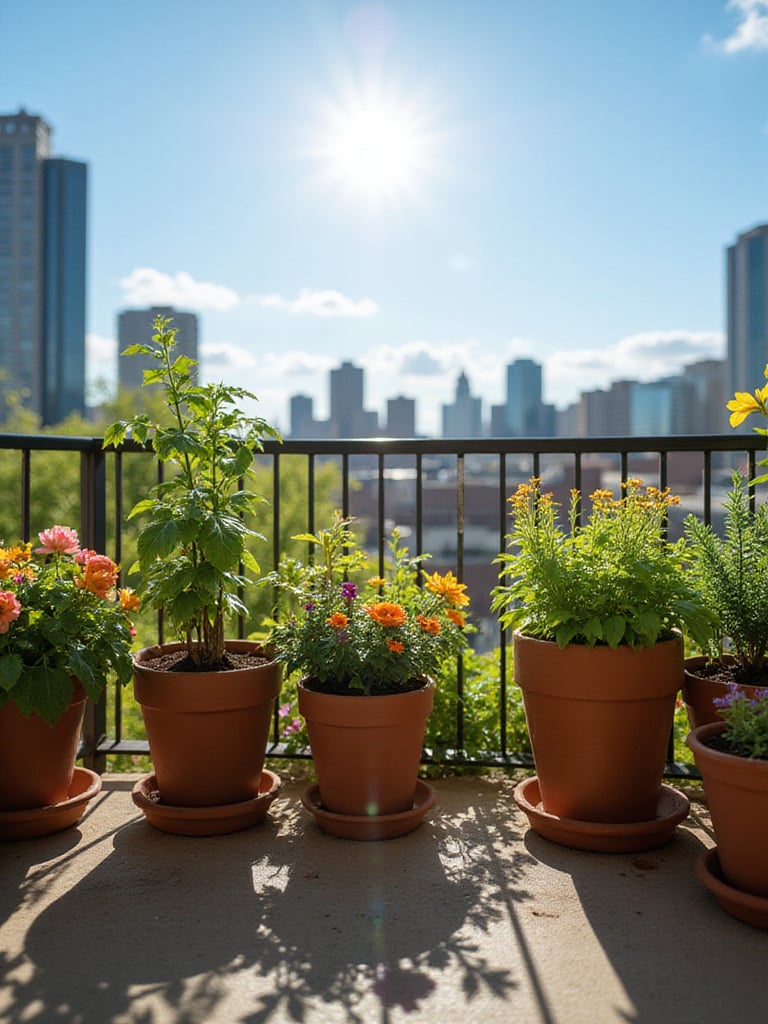
Determining your location’s sunlight is straightforward but requires observation. Check your space hourly throughout the day, noting how long the sun shines directly on potential container locations. After a few days, you’ll have a clear picture of your garden’s sunlight patterns.
The surprising part is that even shady locations can host beautiful container gardens! While full sun offers the widest plant choice, many gorgeous plants thrive in shade—hostas, ferns, impatiens, and leafy greens all perform beautifully with limited light. You can also supplement with grow lights if natural sunlight is scarce.
Watering is the most frequent container gardening task, and getting it right is crucial. There’s no magic schedule—watering frequency depends on plant type, container size and material, soil, weather, and growth stage.
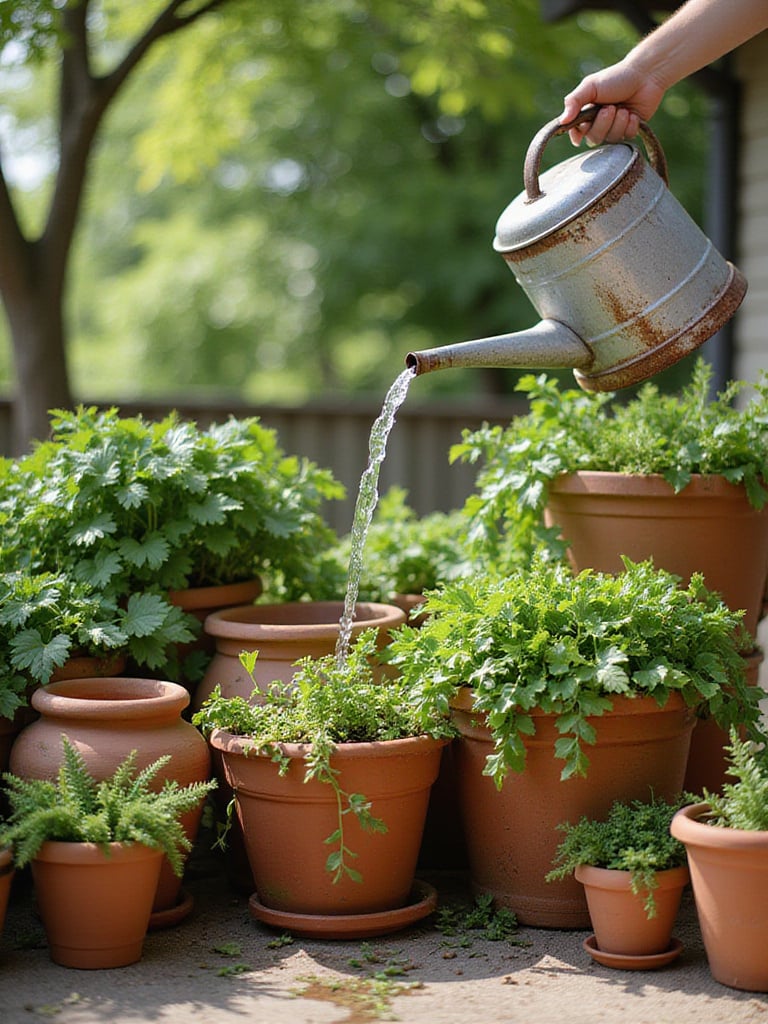
The key thing to understand is that checking soil moisture is your best approach. Stick your finger an inch or two deep—if it feels dry, it’s time to water. Water deeply each time until it drains from the bottom holes, ensuring the entire root ball is moistened. This encourages deeper root growth and drought resistance. Early morning is the ideal watering time, allowing foliage to dry during the day and minimizing fungal diseases.
What complicates this is that different containers have different needs. Clay pots lose moisture faster than plastic, so plants in terra cotta will need more frequent watering. Your container garden’s location also matters—windy balconies and hot, sunny spots will dry out more quickly than sheltered areas.
Container gardens are closed ecosystems—plants can’t access nutrients beyond their pots. Unlike in-ground gardens where roots can explore for nutrients, container plants rely entirely on you for their nutritional needs.

Understanding fertilizer labels is essential:
A balanced approach works best for most container gardens: use slow-release granular fertilizer at planting time, then supplement with liquid fertilizer every 2-4 weeks during the growing season. This provides both immediate nutrition and a steady long-term supply.
The game-changer happened as I worked with luxury retail displays—I realized that plants, like merchandise, need to be “refreshed” regularly to maintain their appeal. Just as stores rotate stock, your container garden needs consistent nutritional inputs to keep looking its best.
Choosing the right location is about more than just aesthetics—it’s about providing the optimal environment for your plants to thrive. While sunlight is paramount, other factors like wind exposure and temperature also play crucial roles.
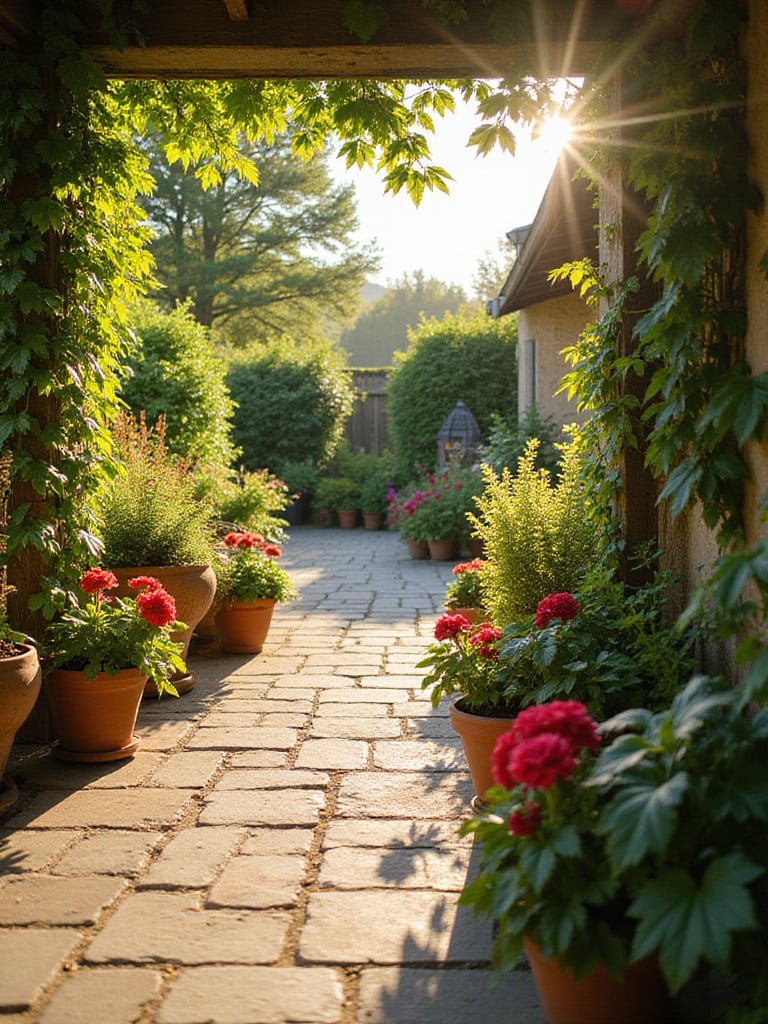
Beyond sunlight, consider these location factors:
Let me paint you a picture: even a shady corner can become a lush oasis with the right plant selection. Hostas, ferns, and impatiens can transform a dim spot into a verdant retreat. Meanwhile, that scorching south-facing balcony is perfect for Mediterranean herbs and sun-loving flowers. The key is matching plants to the conditions your location provides.
A truly stunning container garden is more than just a collection of plants—it’s a carefully composed arrangement. The “Thriller, Filler, Spiller” method is a professional design principle I’ve adapted from retail displays to create balanced, eye-catching container gardens.
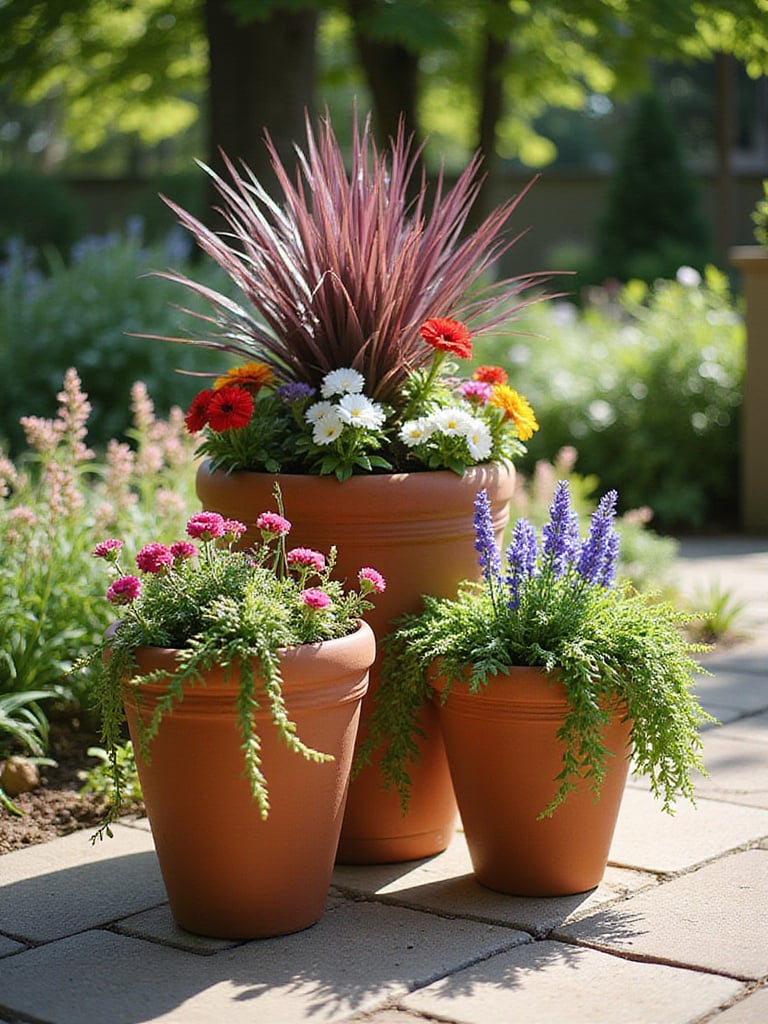
Here’s how it works:
This method creates visual harmony and depth, preventing containers from looking flat or monotonous. It’s adaptable to all container types and styles—from minimalist modern to exuberant cottage garden. The crucial element is ensuring all plants have similar water and light requirements.
My breakthrough came when I realized this retail-inspired approach transforms ordinary container gardens into professional-looking displays. Just as a store window has a focal point, supporting elements, and finishing touches, your container garden can follow the same principles for maximum impact.
Limited space? Look up! Vertical container gardening allows you to grow more plants in a limited footprint by utilizing walls, fences, and vertical structures. It’s a space-saving and visually stunning way to garden.
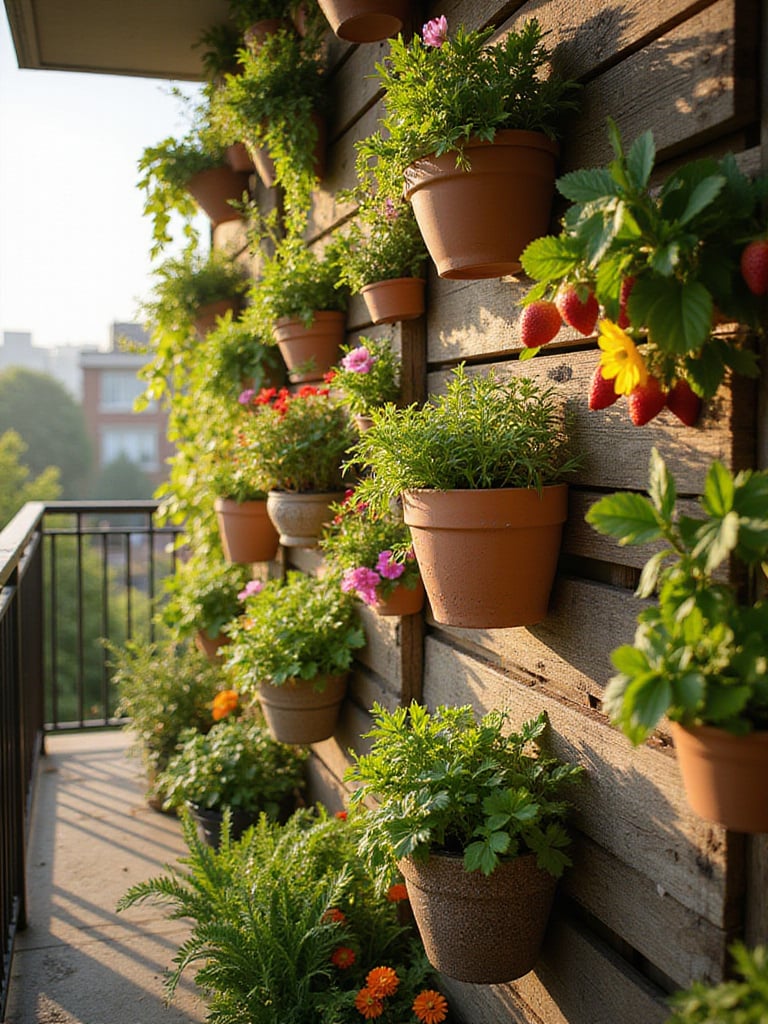
Vertical container gardens add tremendous visual interest while maximizing growing space. Many plants thrive in vertical settings:
What many people overlook is that vertical container gardens also create privacy, improve air quality, and can even help insulate walls. They transform blank vertical surfaces into living art installations that change with the seasons.
Imagine stepping onto your patio and snipping fresh herbs to elevate your cooking. Herb container gardens bring fragrance and flavor right to your doorstep, offering both culinary benefits and visual appeal.
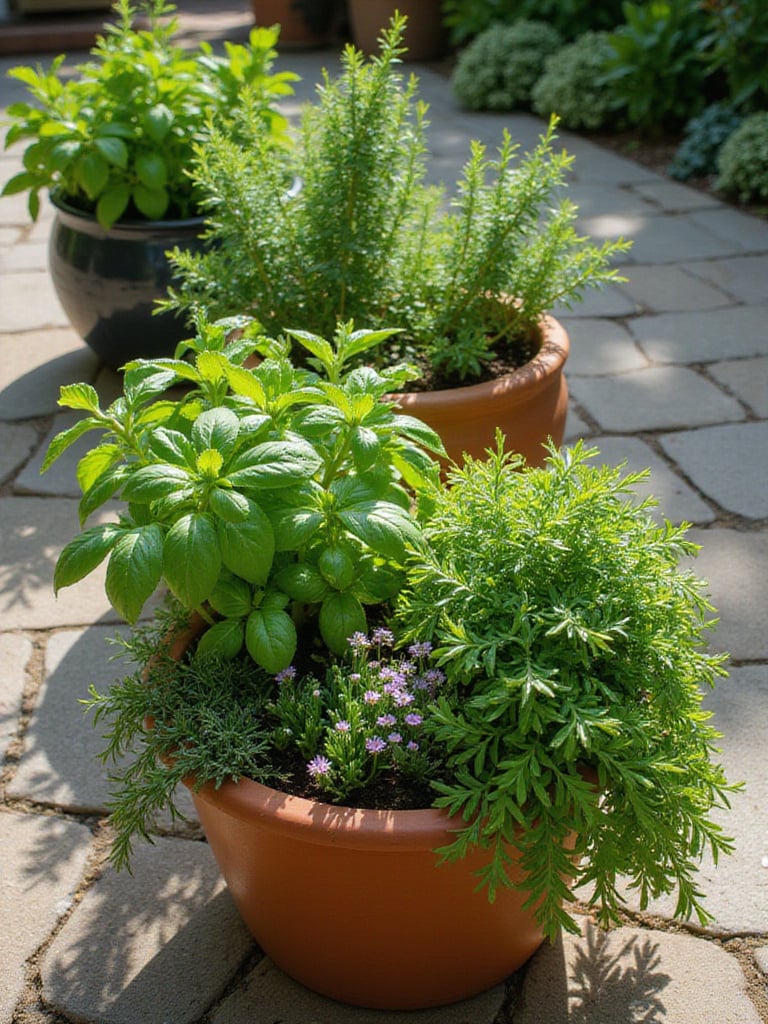
Many herbs are perfectly suited for container growing:
When it comes to containers, depth matters more than width for most herbs. A pot at least 8 inches deep provides adequate root space. Group herbs with similar water needs together—don’t mix drought-tolerant rosemary with moisture-loving basil in the same container.
Things took an interesting turn when I arranged herb containers like a retail display—grouping them by cuisine type. An Italian herb container (basil, oregano, thyme) beside a Mexican-inspired pot (cilantro, epazote) creates both visual interest and practical cooking convenience.
Fresh, homegrown vegetables are a delight, and container gardens make it possible even without a traditional garden plot. The satisfaction of harvesting your own produce from containers just steps from your kitchen is unmatched.
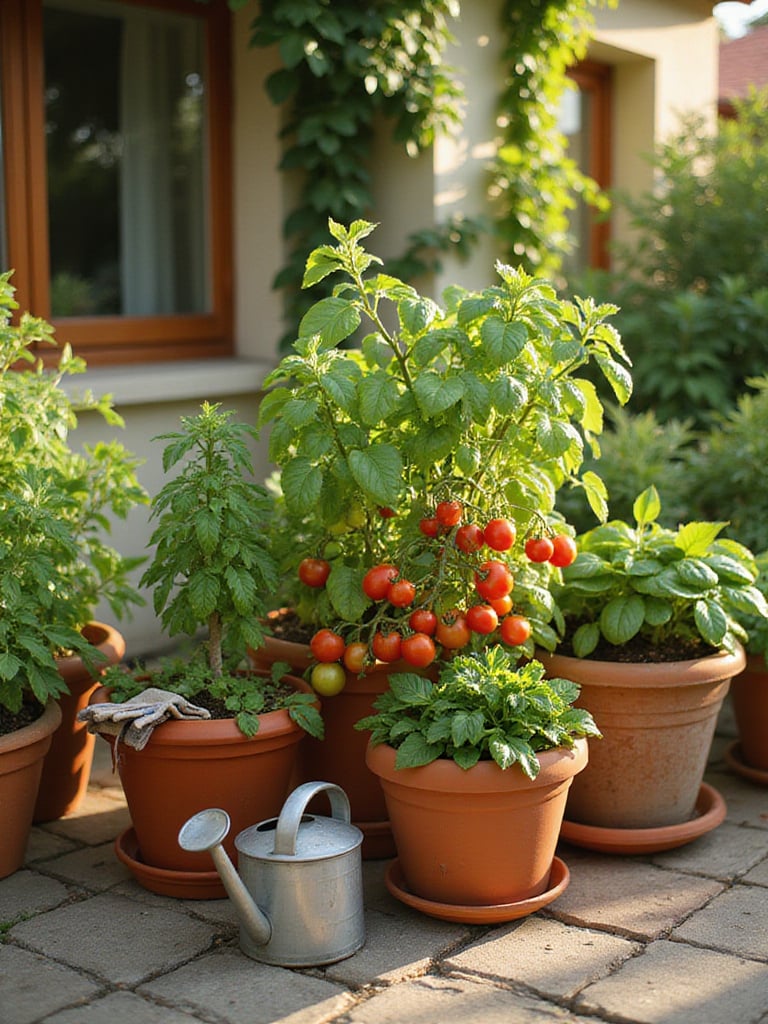
For beginners, focus on these easy-to-grow vegetables:
Container size matters significantly—tomatoes and peppers need larger pots (12-24 inches), while leafy greens can thrive in smaller containers. Always use high-quality potting mix formulated specifically for containers, and consider adding slow-release fertilizer at planting time.
Do you see how huge that is? You can create an entire “kitchen garden” in containers on a modest patio or balcony, bringing the farm-to-table concept right to your home. With thoughtful planning, your container vegetable garden can provide fresh produce throughout the growing season.
Container gardens showcase vibrant flowers beautifully, turning patios and balconies into colorful havens. A well-designed flowering container garden creates instant impact and can change with the seasons.
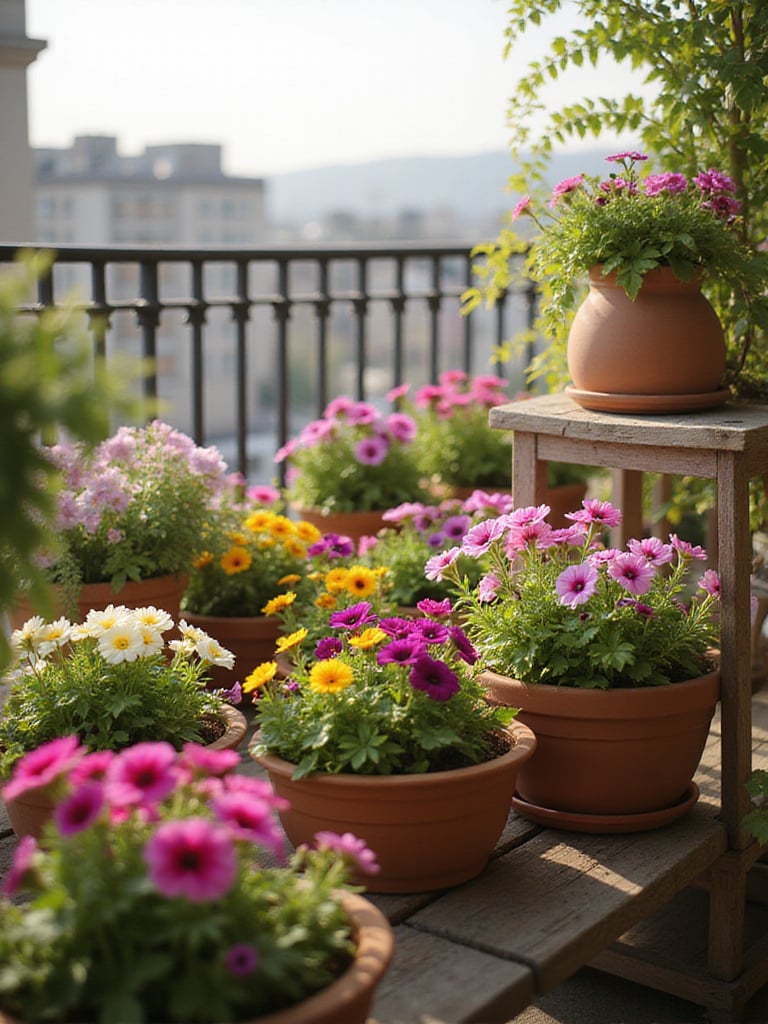
The best flowers for containers depend on your sunlight conditions:
To ensure continuous blooming, deadhead spent flowers regularly and fertilize with a bloom-boosting formula (higher in phosphorus). Consider creating a “color echo” by repeating the same color in different plants throughout your container garden display—a technique borrowed from high-end retail displays.
The stumbling block for many is creating cohesive container gardens that look professionally designed. The secret? Choose a limited color palette (2-3 colors) and vary the textures and heights. This creates a curated look that appears intentional rather than haphazard.
Small spaces don’t have to limit your gardening dreams. Dwarf varieties are specifically bred to stay compact, making them ideal for container gardens and maximizing your growing potential.
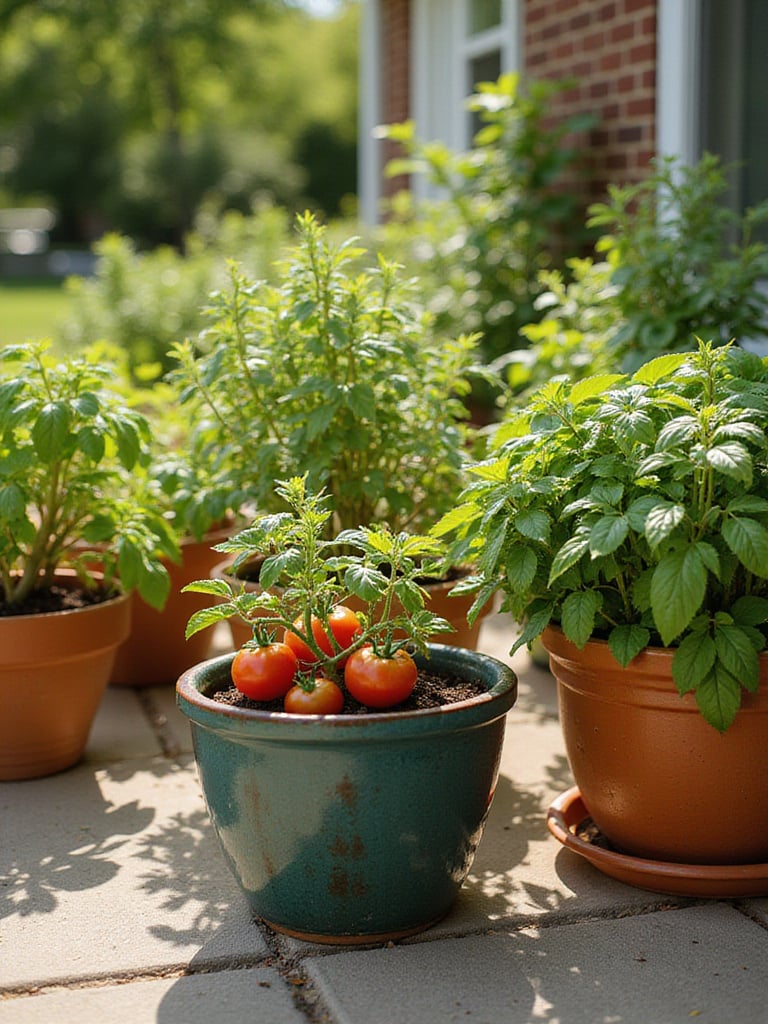
Popular dwarf varieties that thrive in containers include:
Caring for dwarf varieties follows the same principles as their larger counterparts, just in smaller containers. Use high-quality potting mix, ensure adequate drainage, and monitor watering carefully—smaller containers can dry out quickly.
It’s similar to how luxury retailers maximize limited floor space with carefully curated displays. By selecting dwarf varieties, you’re creating a concentrated garden experience that delivers the same visual impact and harvest in a fraction of the space.
Just as retail displays need refreshing, container plants eventually need larger pots and fresh soil. Repotting is essential to revitalize your plants, providing them with space to grow and renewed nutrients.
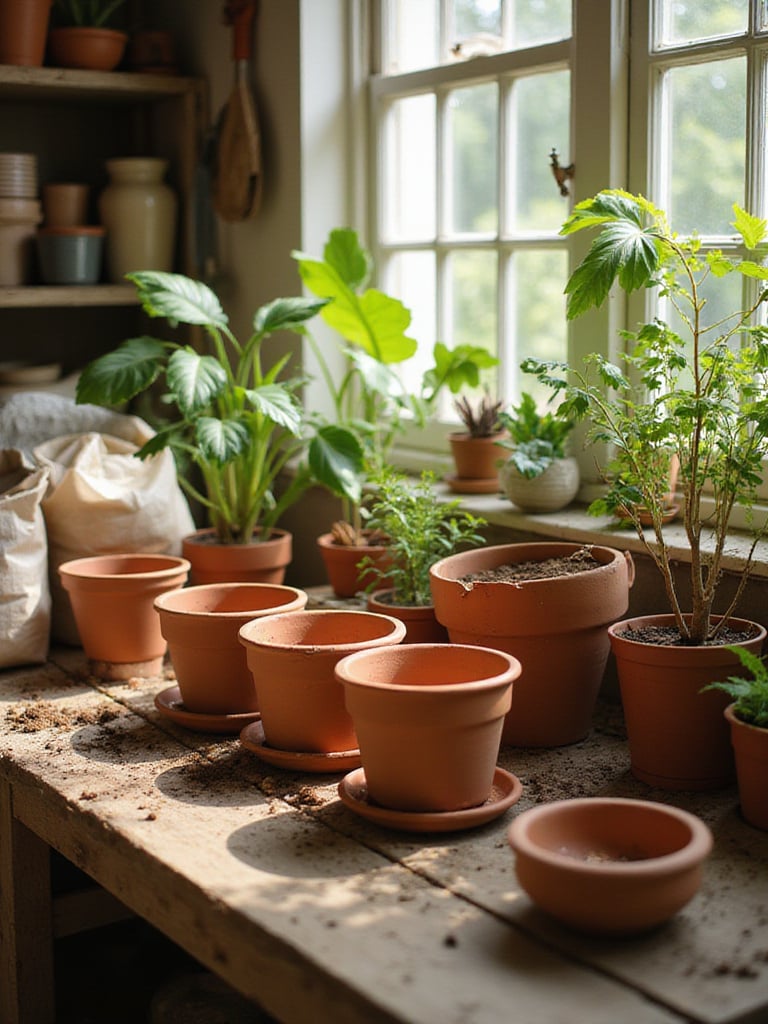
Signs your plant needs repotting include:
The best time to repot is during dormancy or early spring, before new growth starts. Choose a new pot just 1-2 inches larger in diameter for smaller plants, and up to 4 inches larger for larger specimens. Avoid drastically increasing pot size, as this can lead to overwatering issues.
You might be wondering about repotting stress. To minimize shock, water your plant thoroughly a day before repotting, and avoid disturbing the roots more than necessary. After repotting, place the container in a sheltered location for a few days to allow the plant to adjust to its new home.
Pests can quickly turn a thriving container garden into a struggling one. But harsh chemicals aren’t necessary—natural pest control methods can effectively protect your plants while maintaining a healthy garden ecosystem.
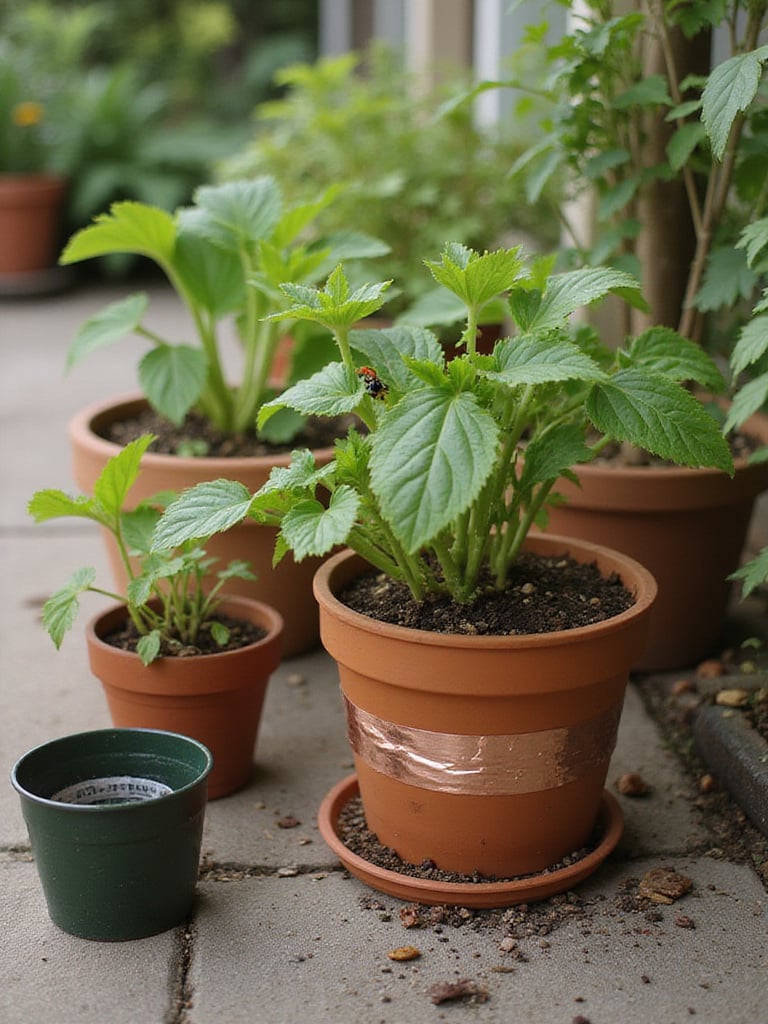
Common container garden pests include:
Natural solutions that actually work include:
The breakthrough came when I realized that retail-inspired organization makes pest management easier. By elevating containers on stands, grouping similar plants together, and maintaining good air circulation, you naturally reduce pest problems while creating a more visually appealing display.
Winter can be harsh on container gardens, making preparation essential for plant survival. Taking steps to winterize your containers ensures your garden bounces back beautifully in spring.
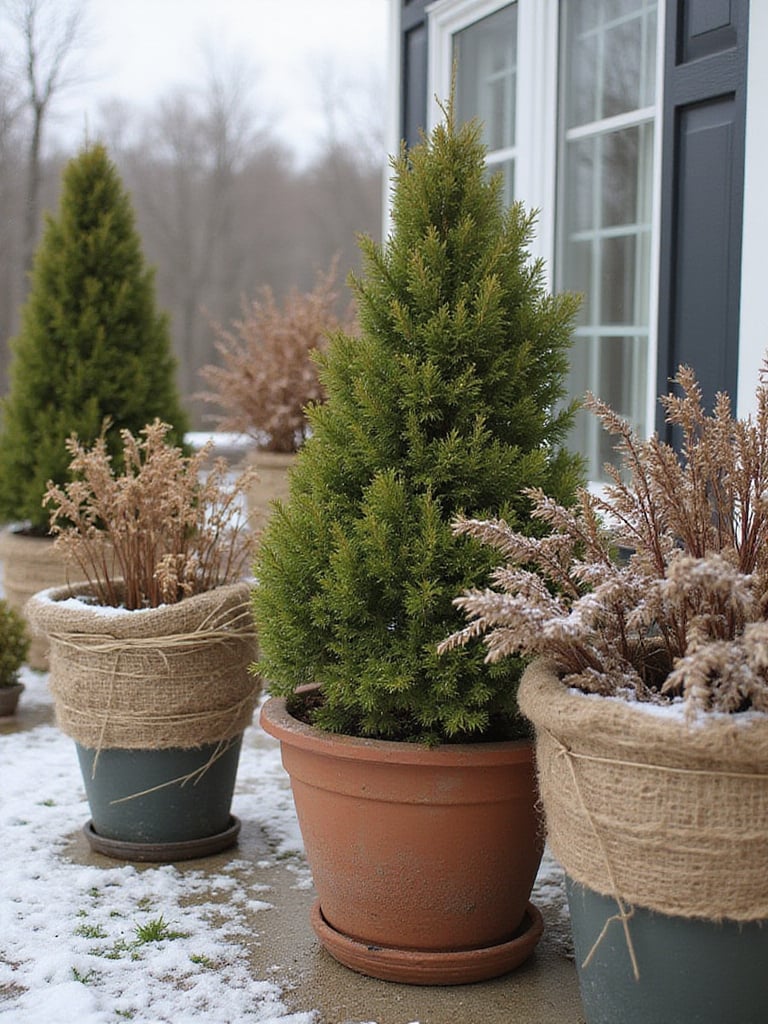
Container plants are more vulnerable to cold than in-ground plants because:
To protect your container garden:
It works something like this: think of winterizing your container garden like merchandising a seasonal display. Just as retailers transition their displays for winter, you’re transitioning your garden to showcase winter-interest plants while protecting the more vulnerable specimens until spring.
Mulch is more than just a decorative topping—it’s a powerhouse of benefits for your container garden plants. This simple yet effective technique elevates your containers both functionally and aesthetically.

Mulching provides multiple benefits:
For container gardens, apply a 1-2 inch layer of mulch, leaving a small gap around plant stems to prevent rot. Thinner mulch layers are sufficient for smaller containers compared to in-ground gardens.
Perhaps you’ve already guessed that mulching container gardens is another retail-inspired technique. Just as high-end displays use consistent finishing touches, mulch provides that polished look that takes your container garden from amateur to professional. It’s the equivalent of the perfect tissue paper in a luxury shopping bag—a small touch that significantly elevates the experience.
Imagine plants working together to enhance each other’s growth and ward off pests. Companion planting creates a more resilient and productive container garden through strategic plant pairings.
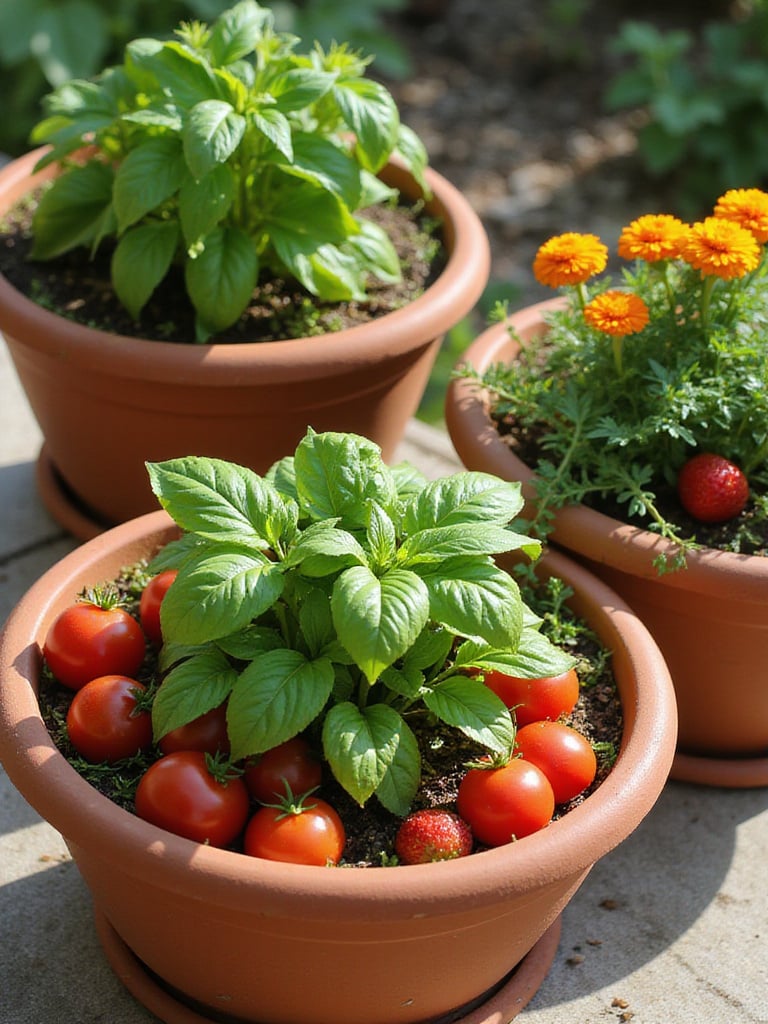
Effective container companion planting combinations include:
Not all plants play nicely together, though. Avoid planting:
Now, I know what you’re thinking—won’t companion planting make my containers look cluttered? That’s where retail display principles come in. By treating companion plants as intentional pairings rather than random combinations, you create cohesive “vignettes” within your container garden that look purposeful and designed.
Gardening is easier and more enjoyable with the right tools. A well-equipped toolbox makes container gardening tasks efficient and keeps your plants thriving.
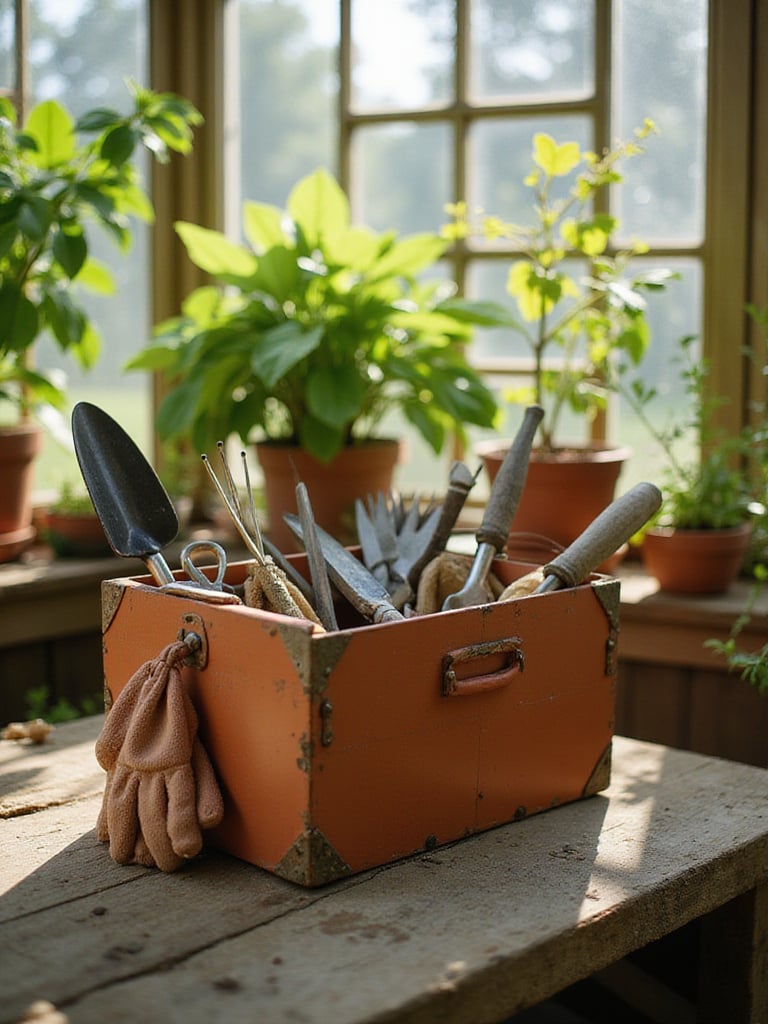
Essential tools for every container gardener include:
Specialized tools that elevate your container gardening experience:
The implications are staggering when you consider how much easier gardening becomes with the right tools. Just as professional visual merchandisers have specialized tools for creating displays, your container gardening toolkit allows you to maintain your garden with professional results and minimal effort.
In the excitement of planting, it’s easy to overlook labeling. But labeling your container plants is a simple habit that will save you confusion and ensure you remember what you planted and where.
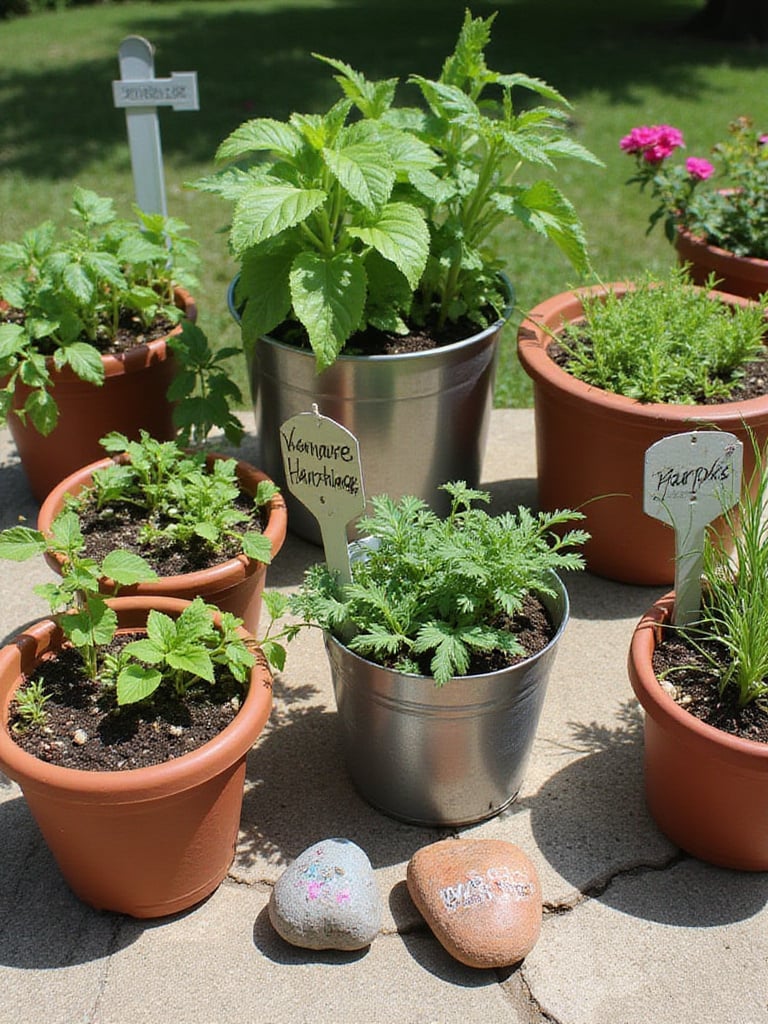
Labeling plants is crucial because:
For container gardens, use durable, weather-resistant labels like:
The ripple effects are enormous from this simple practice. Not only does labeling help you maintain your garden properly, but it also creates a more organized, professional-looking display. Think of plant labels as the equivalent of product information cards in a retail setting—they add value and context to what you’re seeing.
Why limit your container garden to just a few months? With careful plant selection and planning, you can enjoy a thriving container garden throughout the year, bringing seasonal beauty to your doorstep no matter the weather.
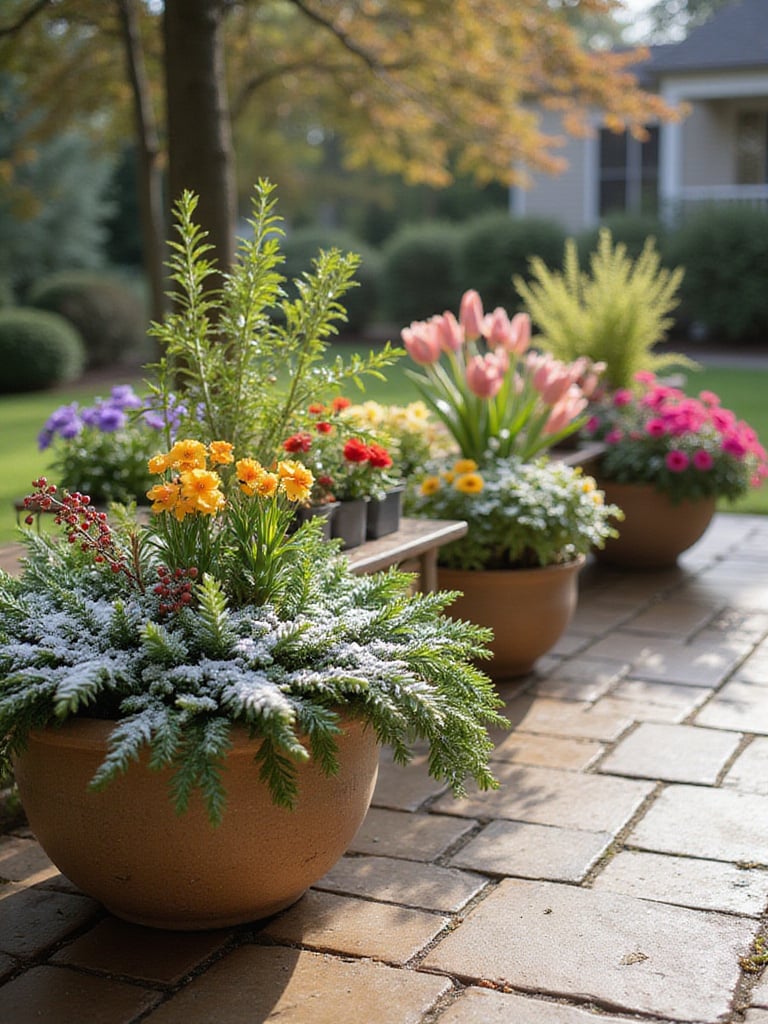
To create a year-round container garden:
Protection from extreme weather is essential:
This changes everything, doesn’t it? Instead of dismantling your container garden at season’s end, you’re simply transitioning it—much like retailers refresh their window displays throughout the year. Your container garden becomes a dynamic, evolving feature that reflects the changing seasons.
Visual inspiration can ignite your creativity and help you envision possibilities for your own container garden. Drawing inspiration from various sources helps you develop a personal style while learning new techniques.
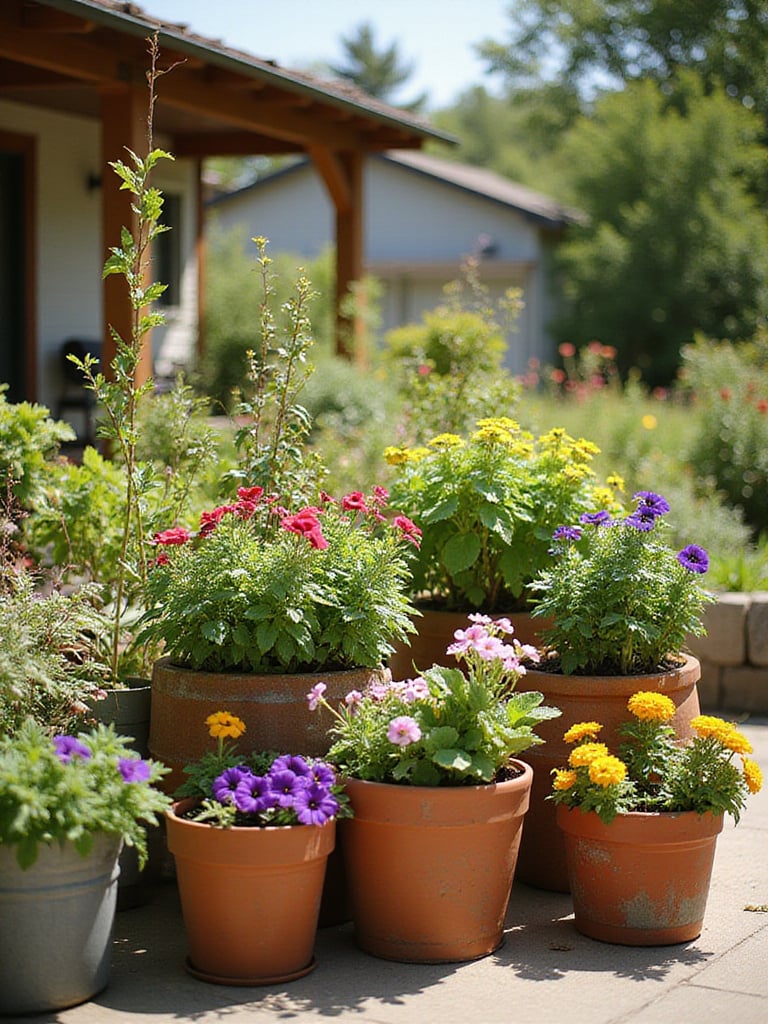
Look for inspiration that showcases:
“The best container gardens tell a story—they’re not just plants in pots, but curated collections that reflect personality and purpose.”
My experience taught me that the most striking retail displays always tell a cohesive story, and the same principle applies to container gardens. Whether you’re creating a peaceful Zen retreat, a productive kitchen garden, or a riotous cottage garden in containers, maintaining a consistent theme or color story elevates the entire display.
Container gardening offers endless possibilities for creating beautiful, productive spaces regardless of where you live. From understanding the essentials of soil and drainage to mastering design principles and seasonal care, these 23 secrets provide the foundation for stunning container gardens with professional flair.
The retail-inspired approach—focusing on display principles, thoughtful arrangement, and consistent maintenance—transforms ordinary container gardens into extraordinary focal points. Just as luxury retailers create immersive experiences through careful curation, your container garden can become a captivating display that evolves with the seasons.
So embrace the versatility and joy of container gardening. Experiment with different combinations, refine your techniques, and watch your space transform into a vibrant oasis, one beautifully designed container at a time. Your container garden masterpiece awaits!